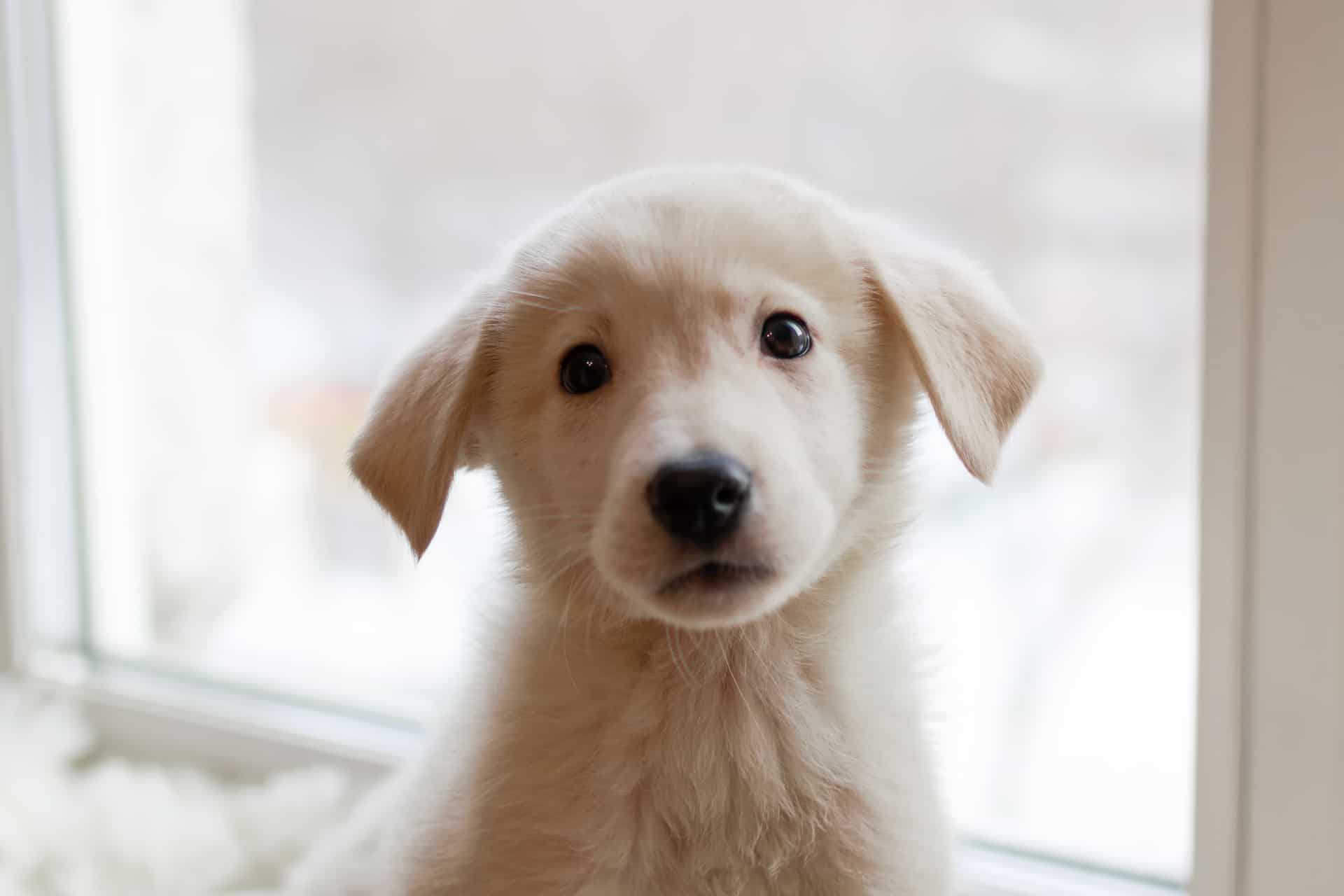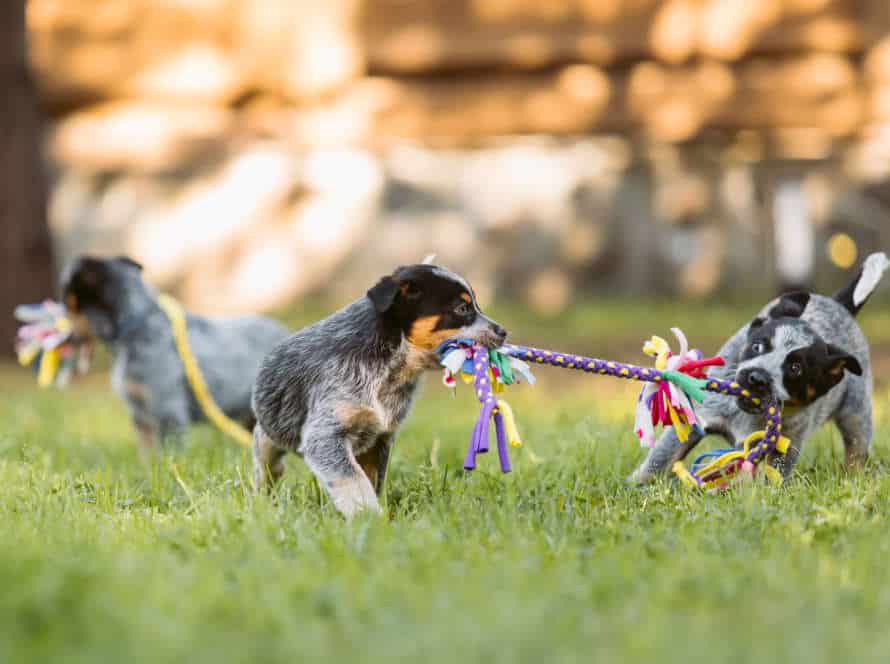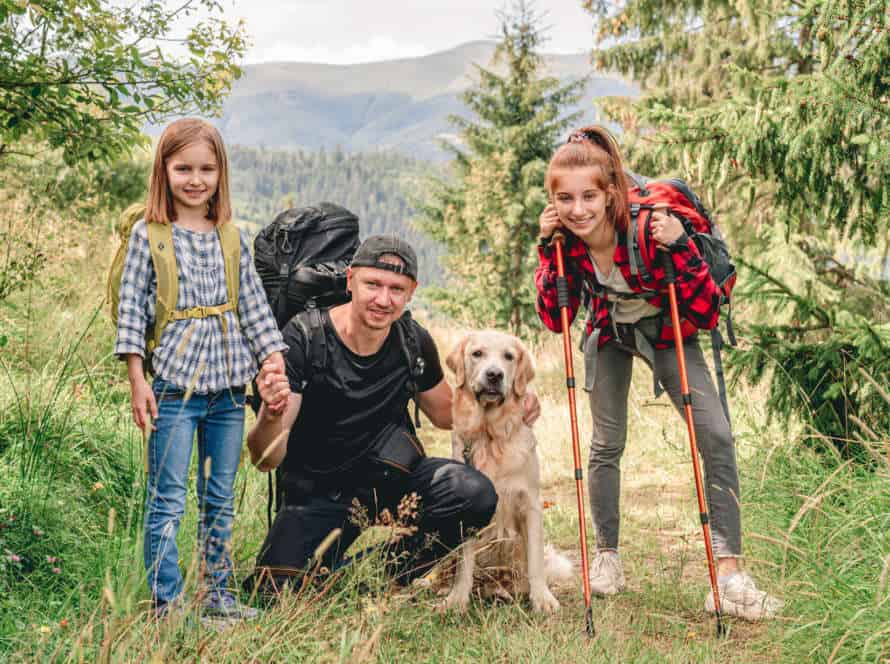Patience and Consistency: The Key to Socializing Your Shy Puppy
Socializing a timid pup calls for lots of patience and consistency from the owner. It’s important to make a secure atmosphere to help ease their worries and fear. Here are some tips:
- Begin with one-on-one interactions with close family members.
- Gradually bring in new people and places, starting with low-stress scenarios, such as a walk in a peaceful park or a car ride.
- Reward positive associations with treats, compliments, and play.
- Avoid pushing your pup into scenarios that may overwhelm them.
- Maintain a regular schedule to make your shy puppy feel secure and at ease.
Socializing a shy pup takes time and energy. With patience, understanding, and consistency, your shy pup can gain confidence and be more comfortable in new situations.
Understanding Socialization
Introduce your pup to different situations, people and animals – this is called socialization! Super important. It prevents future behavior issues, and also teaches manners. To help your pup become happy and outgoing, you need to understand their socialization needs and how it develops. Get to it!
What is socialization?
Socialization is the act of showing your puppy to various people, animals, and situations. This will help them become sociable canines. Socializing a timid pup is a gradual process that needs patience and persistence.
Here are a few tips for socializing a shy pup:
- Start early – Begin socializing your puppy as soon as possible to stop shyness from becoming a long-term issue.
- Positive reinforcement – Use treats, compliments, and other rewards to motivate your puppy to interact and socialize with other people and dogs.
- Exposure – Gradually get your pup familiar with new people, animals, and scenarios in a positive and controlled atmosphere.
- Consistency – Consistency is essential when it comes to socializing your pup. Make socializing a part of your regular routine and stay consistent.
Remember that every pup is different, and some may need more time and patience to feel comfortable around others. But with patience, consistency, and positive reinforcement, you can aid your timid puppy to become a content and cheerful dog. So, take it slow with your furry buddy and let them adjust to it at their own speed.
Why is socialization important?
Socialization is key for young pups. It’s vital they’re exposed to different environments, people, and animals- this helps them become confident adults. Socializing teaches puppies how to deal with unfamiliar situations and handle stress. Here’s how to socialize a shy pup:
- Patience & Consistency: Introduce new experiences gradually and consistently to avoid overwhelming them.
- Positive Reinforcement: Give treats or praise when they show good behavior.
- Controlled Environment: Start with home or yard before going to new places.
- Interaction with Other Dogs: Pups need to learn how to interact and socialize positively with other dogs.
Socializing your pup will help them become a well-behaved adult. They’ll be able to live happily with humans and other animals.
When to socialize a puppy?
Socializing a pup is essential for its growth. Start early! The best time is between 3-14 weeks – known as the critical socialization period. Pups are open to new stuff at this age and likely to have positive feelings towards people, animals and environments.
Socialization is a step-by-step process. Introduce new situations slowly and often. For shy puppies, extra patience and consistency is needed. Make sure each experience is a good one – reward good behavior and don’t push the pup out of its comfort zone.
With effort and dedication, even a shy pup can become a happy, social member of the furry family.
Signs of Shyness in Puppies
Is your pup exhibiting shyness? It’s vital to grasp why, and how to help them become more sociable. Shyness in puppies could be due to genetics, early experiences, or lack of socialization. Note the signs of shyness first, before taking steps to socialize.
What Causes Shyness in puppies?
Shyness in puppies can be caused by genetics and experiences during their ‘critical socialization period’. Common signs are: avoiding eye contact, cowering, trembling, and not wanting to interact.
The key to help them overcome this shyness is patience and consistency. Create a safe place for them to explore. Show them different people, animals, and objects gradually. Use treats and praise to encourage them when they interact. Be patient and consistent.
Remember: If shyness doesn’t improve, speak to a pro for help with a tailored plan.
How do you know if your puppy is shy?
Puppies can be shy and it can be hard to tell if their behaviour is just a phase or not. Here are some signs that will help you know if your pup is shy:
- Avoidance – They may try to keep away from people or animals.
- Low body posture – They may cower, tuck in their tail, and not look at you.
- Fearful body language – They could tremble, pant, or drool too much.
When it comes to socializing shy puppies, you need patience and consistency. Give them chances to be around people in a safe environment. Praise and reward them when they do good, but don’t give them too much attention. With time, patience and consistency, your shy pup will become a confident adult dog.
Symptoms of shyness in puppies
Is your puppy shy? It could be a sign of underlying behavioural issues or lack of socialisation during the critical developmental period. Here are some common signs:
- Avoiding eye contact.
- Hiding behind objects.
- Cowering when approached.
- Excessive barking.
If any of these happen, be patient and consistent. Introduce new experiences and people in a positive and controlled environment. Reward good behaviour and avoid punishment. With time and effort, your shy puppy will become a confident adult dog.
Tips for Socializing Shy Puppies
Socializing a pup can be tricky for pet owners. Shy puppies present an extra challenge – not only for their pet parents, but for the pup too! With some patience and consistency, though, you can help your timid pup become more social and feel comfy in their surroundings. Here are some tips to help socialize a shy puppy:
Start with gentle and gradual socialization
Socializing your shy puppy can be tricky. But with patience and consistency on your side, it can go more smoothly. Here are a few tips to help!
- Let your pup take the lead and don’t push them into anything.
- Start with familiar, low-stress environments like your home or yard. Then, gradually introduce them to more stimulating situations.
- Use positive reinforcement and treats to motivate your puppy.
- Be patient and consistent. Don’t rush progress – it takes time!
With these tips and patience, you’ll build a strong bond with your pup and help them become a confident and well socialized dog.
Use positive reinforcement training techniques
Positive reinforcement training techniques are a great way to socialize your timid pup. Here are some tips:
- Reward your pup with treats or little rewards when they approach unfamiliar people or situations.
- Be consistent and patient with your training. Give them time to get comfortable.
- Cheer them on and reward them when they make progress.
- Never punish or use negative reinforcement as this could damage their trust and confidence.
- Speak calmly and kindly, ensuring they feel secure.
- Remember that every puppy is unique and may need different socialization approaches. Stay open-minded and flexible.
Familiarize your puppy with new environments
Familiarizing your pup with novel environments is super important. Especially for timid puppies who may feel anxious or scared in unexplored places. Here are a few tips to help socialize your shy pup:
- Begin Gradually: Introduce your pup to calmer and less hectic settings.
- Let them Explore: Let your pup sniff and explore freely by rewarding them with treats or toys.
- Boost their Confidence: Slowly increase your pup’s exposure to different environments, helping them gain confidence in new situations.
- Be Patient and Steady: Patience and consistency are essentials when socializing shy pups. Don’t hurry the process or push your pup into situations they’re not ready for.
With patience and positive reinforcement, your shy pup will learn to be at ease and confident in novel environments.
Puppy Socialization Checklist
Patience and consistency are key for socializing a pup. Puppy socialization is teaching them to be confident in various scenarios and with different people and animals. Here’s a checklist for your pup socialization plan:
First Month
The initial four weeks of your pup’s life is essential for their socialization and growth. Enduring it out and being persistent are the two main things to remember as you work on socializing your timid puppy.
Here’s a guide to follow for socializing your puppy during the first month:
- Gradually introduce your pup to novel people and other animals in a stabilized setting.
- Reward good conduct with treats and positive encouragement.
- Expose your puppy to different sights, sounds and aromas to help them become accustomed to new situations.
- Allow your puppy to investigate and have fun in a secure environment.
- Steadily reinforce good behavior and discourage bad behavior.
It is important to consider that each puppy is unique and may have special socialization needs. Patience and constancy are necessary to build your puppy’s trust and self-assurance.
Second Month
Socializing is super important for your pup’s growth. The second month is a great time to let them explore and try new things! Here are some tips for shy puppies:
- Patience and consistency are vital. Keep your cool, and keep repeating new experiences till your pup feels at ease.
- Introduce sights, sounds, and smells in a controlled space, like home or a fenced-in yard.
- Reward good reactions with treats or praise.
- Have structured playtime with other pups.
- Go on short trips outside your home, like car rides, to get pup used to other places.
- Increase duration and intensity of socializing as they get more comfortable.
Remember, socializing is a lifelong process that needs hard work, patience, and reinforcement.
Third Month
The third month is vital in a pup’s socialization journey. To help a timid pup become more friendly, use a checklist and show patience and consistency. Here’s what to do:
- Introduce pup to different people of all ages and ethnicities.
- Expose pup to diverse sounds, like traffic, kids playing, and vacuums.
- Let pup interact with other puppies and kind dogs.
- Introduce pup to various environments, like parks, grass, and sand.
- Reward pup for good behavior and positive reactions to new encounters.
Remember to go at pup’s speed and avoid overwhelming them. With patience and consistency, your shy pup can be a social butterfly soon!
Choosing a Socialization Method
Introducing your pup to a variety of people, animals, experiences and places? That’s key for socializing a shy pup. But it takes patience and consistency. You must choose the best method for your pup’s personality and needs. Let’s look at the different socialization methods you can use. This will give your shy pup the best chance to become a social companion.
Enrolling your puppy in a socialization class
Enrolling pup in socialization classes is a great way to help them be less shy and interact properly. But, it is vital to pick the right method and be consistent and patient. Here are some tips:
- Begin Slow: Introduce puppy to new people and settings slowly, and always watch over them.
- Consistent: Habitual practice and consistency are essential for successful socialization. Set a routine and stick to it.
- Positive Reinforcement: Praise pup, give treats, or toys when they have positive interactions.
- Don’t Overstimulate: Keep sessions short and doable, and slowly increase length as pup gets more comfortable.
- Appropriate Class: Search for classes that focus on positive reinforcement and kind, positive interactions with other dogs and people.
Socialization is an ongoing process that needs patience and effort. Stay motivated and your puppy will be a confident, well-socialized adult dog.
Pro tip: Always closely watch your pup’s interactions and be ready to adjust the plan if needed.
Working with a dog trainer
As a pet owner, investing in a dog trainer can be great for your pup’s behavior and happiness. Patience and consistency are musts for socializing a shy puppy.
Choose a method that works with the personality and comfort level of your pup. This could be exposing them to new people, sounds, and environments. Or, you might try operant conditioning and positive reinforcement.
Be patient when setting goals and consistent with socialization and positive reinforcement! Socializing a shy puppy isn’t always easy, but a good trainer and supportive environment can help your pet feel more confident and comfortable around others.
Socializing your puppy on your own
Socializing a shy pup needs patience and constancy. It’s key for their mental and emotional health. Here are tips to help:
- Take baby steps. Gently introduce people, animals, and different places.
- Use treats and compliments to reward good behavior. Make it an enjoyable experience.
- Be steady, keep to a regular socialization schedule.
- Remain tranquil, your anxiousness can make your pup anxious.
- Keep in mind, each pup is distinct. Adjust socialization to fit their needs and character.
- Be patient and determined, you can help your pup grow into a confident adult dog.
Ongoing Socialization
For shy puppies, to become confident and social, a continuous and ongoing socialization plan should be established. Expose the pup to new people, animals, and environments in a safe way. Give rewards for good behavior. Patience and consistency are key!
Continuing to socialize your puppy after the critical period
The socialization of puppies is a must. Even though there is a certain period of time that is critical, it’s still important to continue this process afterwards, especially for timid pups. Patience and consistency are the two key ingredients to successful, lasting socialization.
Here are some tips on how to socialize timid puppies:
- Start off with short, pleasant experiences to help increase their confidence, like walks or playdates with friendly dogs.
- Expose your pup to different people, environments, and scenarios, always considering their comfort level.
- Reinforce positive behavior with rewards, so your puppy connects these new experiences with good feelings.
- Be patient and stay consistent – never force your puppy into circumstances that can make them scared or nervous.
Socialization is a long-term process, and is essential in raising an assured, healthy puppy.
Introducing new scenarios and environments
Introducing your shy pup to novel scenarios and surroundings is essential for their socialization and overall well-being. It’s important to take a patient and consistent approach to ensure your pup feels at ease in their environment.
Start slow by introducing them to people and places with low-stress. Socialization can include car rides, parks, vets, other dogs and animals.
Create positive associations with each new experience by providing treats, praise, and lots of love. Consistency is key – so aim to socialize your pup regularly. This will help them form a sense of security and confidence in unfamiliar situations.
Keep in mind that each pup is unique. Some may take more time to adjust than others. Don’t rush your pup and never force them into an uncomfortable situation. Introducing them to new environments at their own pace will help nurture a healthy, social and balanced pup.
Monitoring progress and adjusting techniques accordingly
Socializing a shy puppy can be tricky. Patience and consistency is key. Monitor the pup’s progress and tweak the techniques. Here are tips:
- Observe the puppy’s body language and behavior around new people, places and things. Note reactions and adjust.
- Vary the frequency and duration of socializing – up or down – depending on their response.
- Use treats and praises to reward desirable behavior and cultivate confidence. Be patient and keep monitoring.
- Pro tip: Enrol your pup in an obedience class. This provides controlled exposure to other dogs and people in a helpful atmosphere.
Frequently Asked Questions
Q: How can I socialize my shy puppy?
A: Patience and consistency are key when socializing a shy puppy. Start by exposing your puppy to new environments and people in a gradual and controlled manner, and always reward positive behavior.
Q: Is it too late to socialize my adult dog?
A: It’s never too late to socialize an adult dog, but it may require more time and patience. It’s important to start slow and build trust with your dog, and to seek the help of a professional trainer if needed.
Q: What if my puppy is too scared to socialize?
A: If your puppy is too scared to socialize, it’s important to start with small steps and gradually build up their confidence. Always make sure your puppy feels safe and secure, and never force them into uncomfortable situations.
Q: How often should I socialize my puppy?
A: It’s important to socialize your puppy regularly, but never overwhelm them with too much stimuli at once. Aim for multiple short socialization sessions throughout the day, rather than one long one.
Q: Can I socialize my puppy with other animals?
A: Yes, socializing your puppy with other animals is important for their development. However, always make sure the interactions are supervised and both animals are comfortable and relaxed.
Q: What are some common mistakes to avoid when socializing my puppy?
A: Common mistakes to avoid when socializing your puppy include overwhelming them with too much stimuli, pushing them too hard too fast, and punishing negative behavior. It’s important to always be patient and positive during the socialization process.







